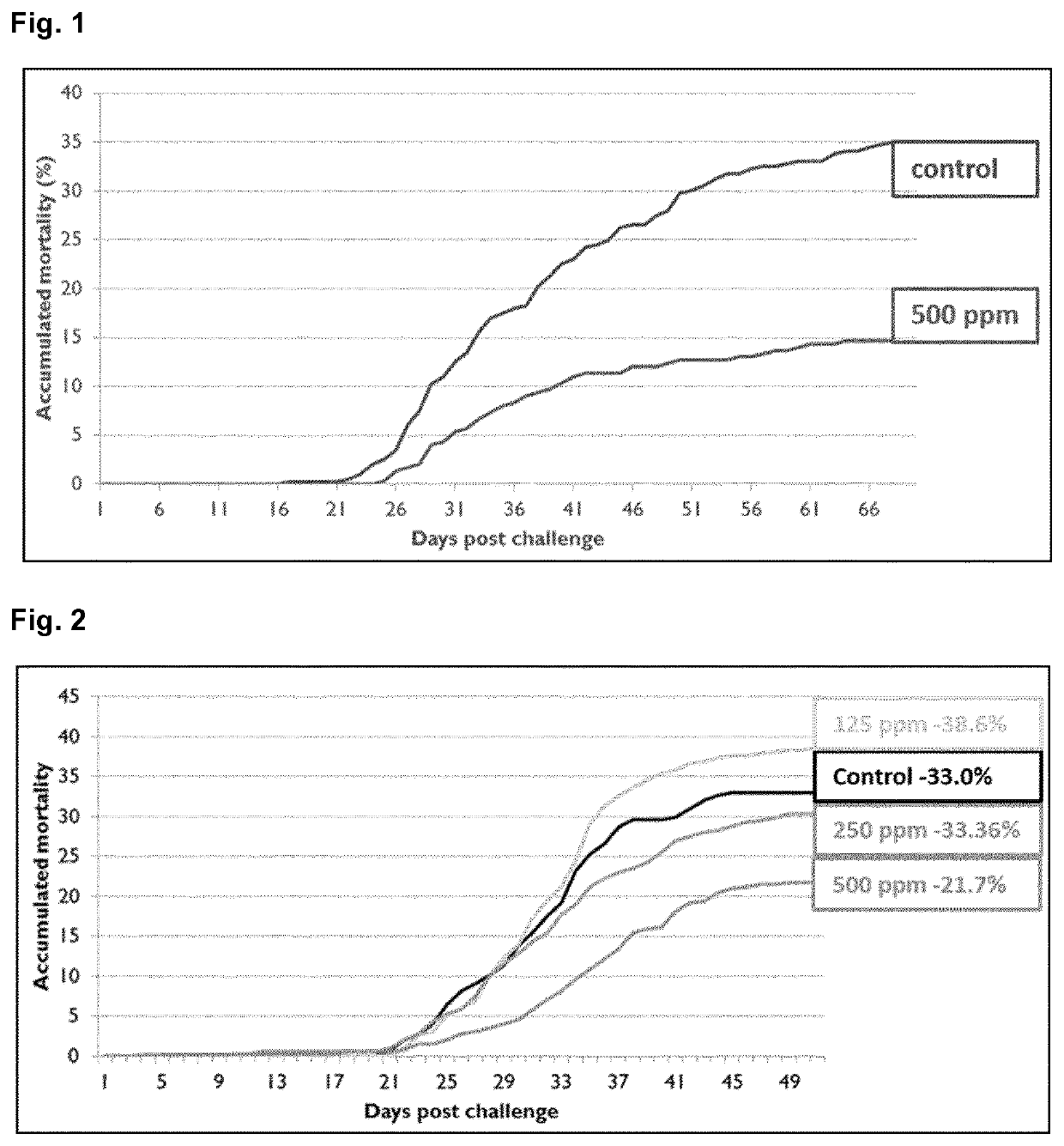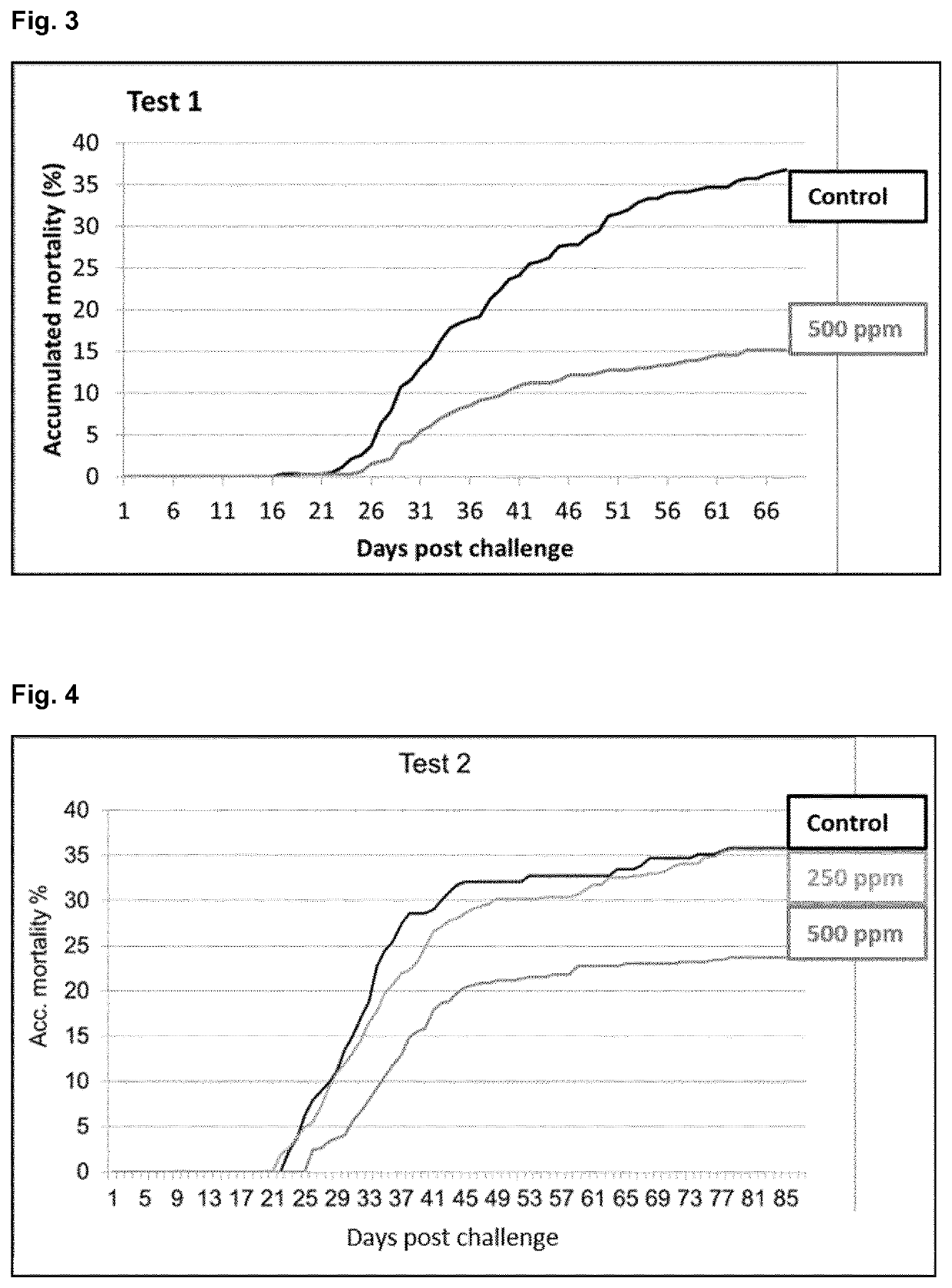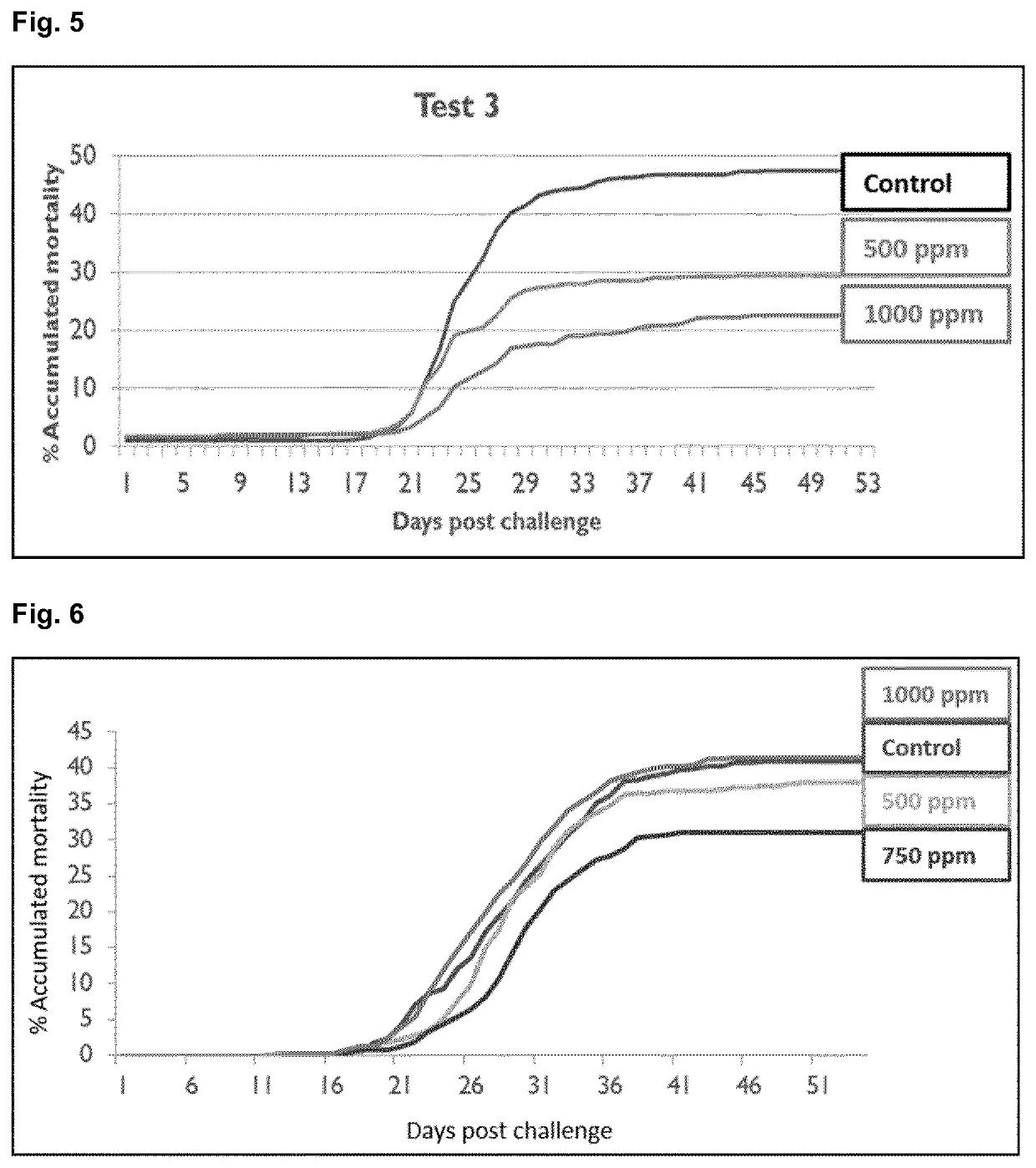Use of alpha lipoic acid as a feed additive for aquatic animals
a technology aquatic animals, which is applied in the field of use of alpha lipoic acid as a feed additive for aquatic animals, can solve the problems of fish escape, wrecked fish pens, and affecting mortality, so as to improve the feed conversion ratio and reduce mortality. , the effect of great potential for fish feed
- Summary
- Abstract
- Description
- Claims
- Application Information
AI Technical Summary
Benefits of technology
Problems solved by technology
Method used
Image
Examples
example
Example 1
Preparation of Pressed Fish Feed
[0174]The main raw materials are ground and mixed. Microingredients are then added to the mixer and the homogenous mix is conditioned by adding water and steam to the mass in a preconditioner. This starts a cooking process in the starch fraction (the binding component). The mass is fed into a pellet mill. The mass is forced through the mill's die and the strings are broken into pellets on the outside of the die. The moisture content is low and drying of the feed is not necessary.
[0175]Additional oil including a fish feed composition according to the present invention is then sprayed onto the surface of pellets, but as the pellets are rather compact, the total lipid content rarely exceeds 24%. The added oil may be fish oil, microbial / algal or vegetable oils, for example rape seed oil or soy oil, or a mixture of oils. After oil coating, the pellets are cooled in a cooler and bagged. The final pressed fish feed contains 10 to 5000 ppm of the com...
example 2
Method for Preparation of Extruded Fish Feed
[0176]The main raw materials are ground and mixed. Micro ingredients incl. a fish feed composition according to the invention are added to the mixer. The homogenous mix is conditioned by adding water and steam to the mass in a preconditioner.
[0177]Additional oil may also be added to the mass at this stage. This starts a cooking process in the starch fraction (the binding component). The mass is fed into an extruder. The extruder may be of the single screw or the twin-screw type. Due to the rotational movement of the mass in the extruder, the mass is further mixed. Additional oil, water and steam may be added to the mass in the extruder. At the end of the extruder, the mass has a temperature above 100° C. and a pressure above ambient pressure. The mass is forced through the openings in the extruder's die plate. Due to the relief in temperature and pressure, some of the moisture will evaporate immediately (flash off) and the extruded mass be...
example 3
Method for Preparation of Alpha Lipoic Acid Composition in Oil
[0183]Alpha lipoic acid (AL) in the form of a powder is sieved through a 1 mm grid to remove larger particles. A small amount of oil is preheated to 45° C. and mixed with the powder to form a homogeneous liquid paste. The added oil may be fish oil, microbial / algal or vegetable oils, for example rape seed oil or soy oil, or a mixture of oils. More oil is added until the desired concentration is reached. The oil functions as a carrier. This AL composition can be sprayed while stirring to prevent the AL from settling. The composition is used to coat the feed described in examples 1 and 2.
PUM
| Property | Measurement | Unit |
|---|---|---|
| Fraction | aaaaa | aaaaa |
| Fraction | aaaaa | aaaaa |
| Fraction | aaaaa | aaaaa |
Abstract
Description
Claims
Application Information
 Login to View More
Login to View More - R&D Engineer
- R&D Manager
- IP Professional
- Industry Leading Data Capabilities
- Powerful AI technology
- Patent DNA Extraction
Browse by: Latest US Patents, China's latest patents, Technical Efficacy Thesaurus, Application Domain, Technology Topic, Popular Technical Reports.
© 2024 PatSnap. All rights reserved.Legal|Privacy policy|Modern Slavery Act Transparency Statement|Sitemap|About US| Contact US: help@patsnap.com










